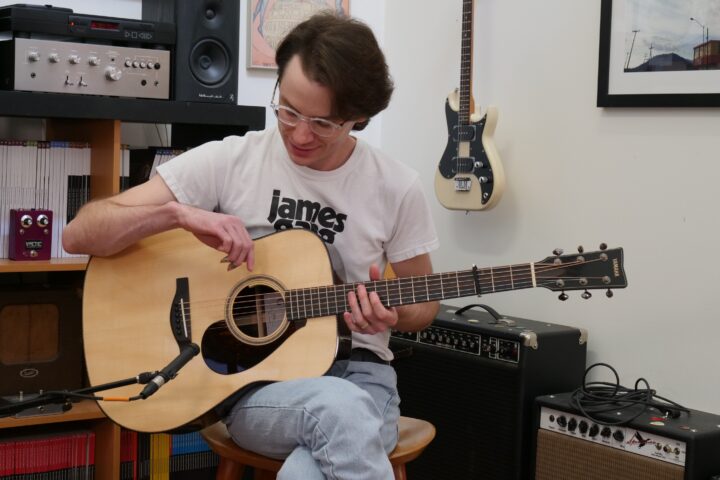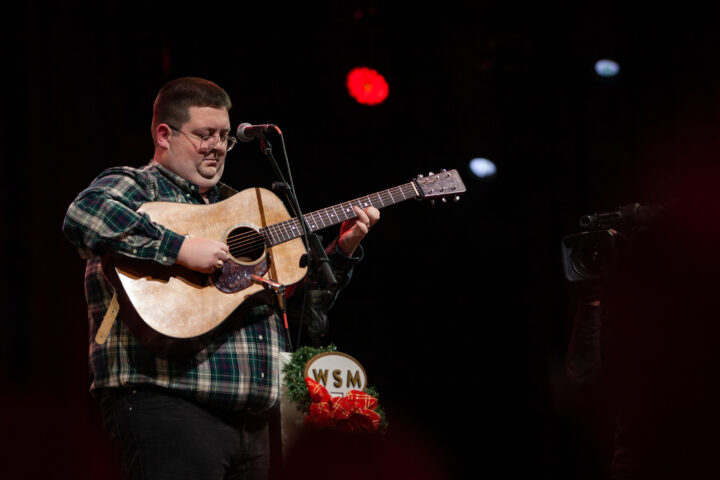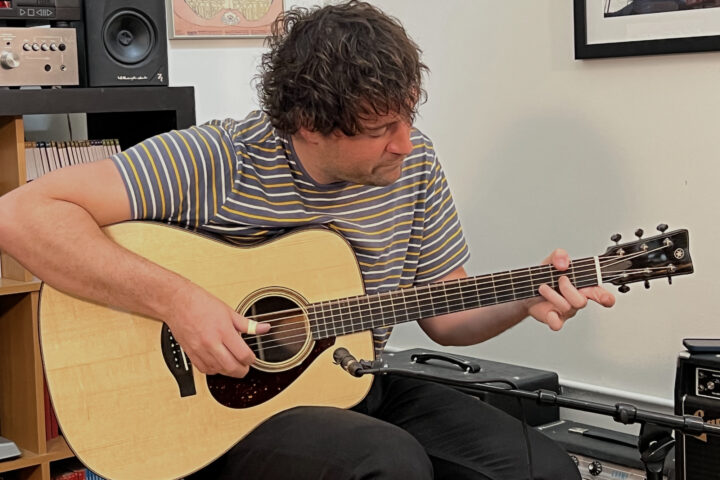I’ve never walked through the Yamaha guitar headquarters in Hamamatsu, Japan, but I assume it’s massive. After all, Yamaha makes thousands of acoustic and electric guitars every year at every imaginable price point (not to mention all those other Yamaha products). I picture a vast building with hundreds of fastidious workers, some serious technology, and tone woods stacked to the ceiling.
But today I’m visiting Yamaha’s other guitarmaking space. It’s not a factory, but a small workshop. It’s clean, but well-used. In fact, it doesn’t look all that different from the workshops of the independent luthiers I typically interview for the magazine. And it’s in Southern California.
This is where Andrew Enns, Yamaha’s Senior Acoustic Guitar Builder, has been tasked with making the brand’s future high-end acoustics. It’s here where he builds guitar prototypes the old-fashioned way: Chisel at the ready, bending sides, thinning tops, cutting and gluing an instrument together, one piece at a time. As I said, the scene is no different from any other high-end luthier’s, but Enns’ background, his approach, and the trans-Pacific construction techniques he uses may just surprise you. I’ve never watched a guitar get made like this.
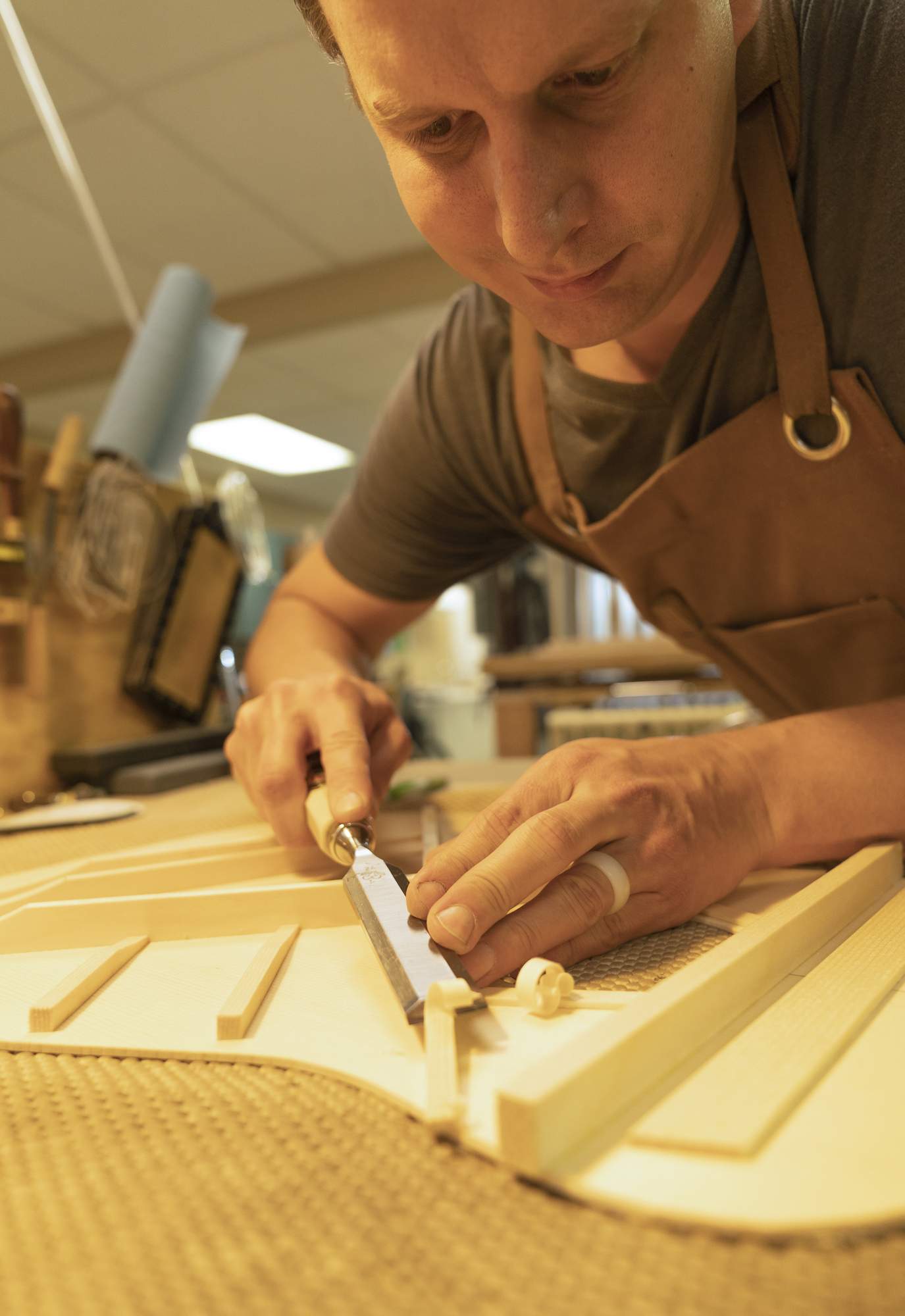
Meet Andrew
Enns didn’t graduate from one of the big guitarmaking schools or apprentice for a master. In fact, he’s pretty much self-taught. “My family did a whole lot of things,” he recalls of his childhood in Fresno, California. “My grandparents on both sides were certified carpenters, and I think it kind of just runs in the family. When I was a little kid, I’d go to my dad’s father’s house and he’d show me how to cut things with a coping saw. [I remember] making stuff in my parent’s garage.”
Around high school, the guitar bug hit him hard. Enns immersed himself in shop class. “I took wood shop too much and they wouldn’t let me take it anymore,” he recalls. “So I became the shop teacher’s assistant. I was in shop class all the time. There was this old electric guitar body, like a Les Paul, that had been hanging out in there. It kind of dawned on me that guitars were made out of wood and I know how to make things out of wood.”
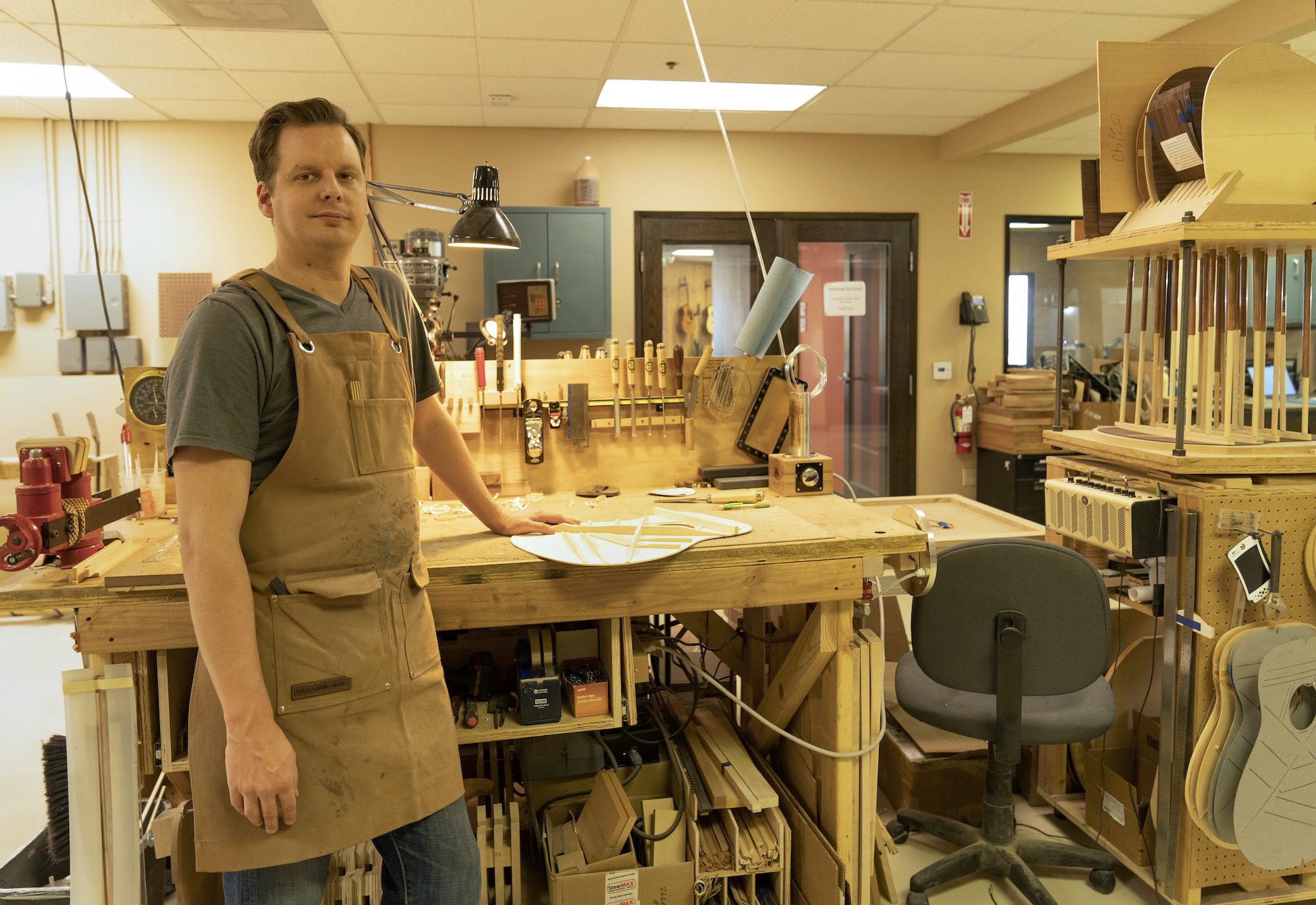
The first instrument he attempted was his take on his-then “dream guitar,” a PRS-inspired flame maple creation. This was around 2000, long before there were countless YouTube tutorials or shop tours walking you through how to build a guitar. For inspiration, he turned to the print catalogs of parts supplier StewMac. “I didn’t know a single person who’s ever made a guitar,” he recalls. “Over the course of about a year, slowly as I got some money, I bought parts.”
Enns went to college to be an engineer, but all the while, he couldn’t resist building new instruments. “I lived in an apartment in Orange County, California and was literally building electric guitars on a 5’ x 8’ patio outside,” he says. “I’d talked to my neighbor and say, ‘Hey, I’m going to make some noise for a minute! It’s just a handheld router … I’m making a guitar!” He soon dropped out of college and landed a job at a guitar company doing customer service and minor repair work. When that gig ended, he went back to school for a degree in film production.
“I was working in Hollywood at a job I really did not like, making very little money and commuting a long distance,” he recalls. “I was like, ‘I need to find a better job than this.’”
He found himself in the guitar industry once again – working for Cordoba – and hasn’t looked back since. At that company, he got a virtual master class in classical guitar construction. He had unlimited hands-on time with some of the world’s finest nylon-string instruments and he could pick the brain of acclaimed luthier/Cordoba consultant Kenny Hill. “Kenny came and stayed a week and would be like, ‘Okay, this week we’re going to go over Torres. We’re going to design and essentially build a Torres, and then kind of go over the specs.’” Eventually, the pair worked their way through the greats: Torres, Hauser, Rodriguez and Reyes.
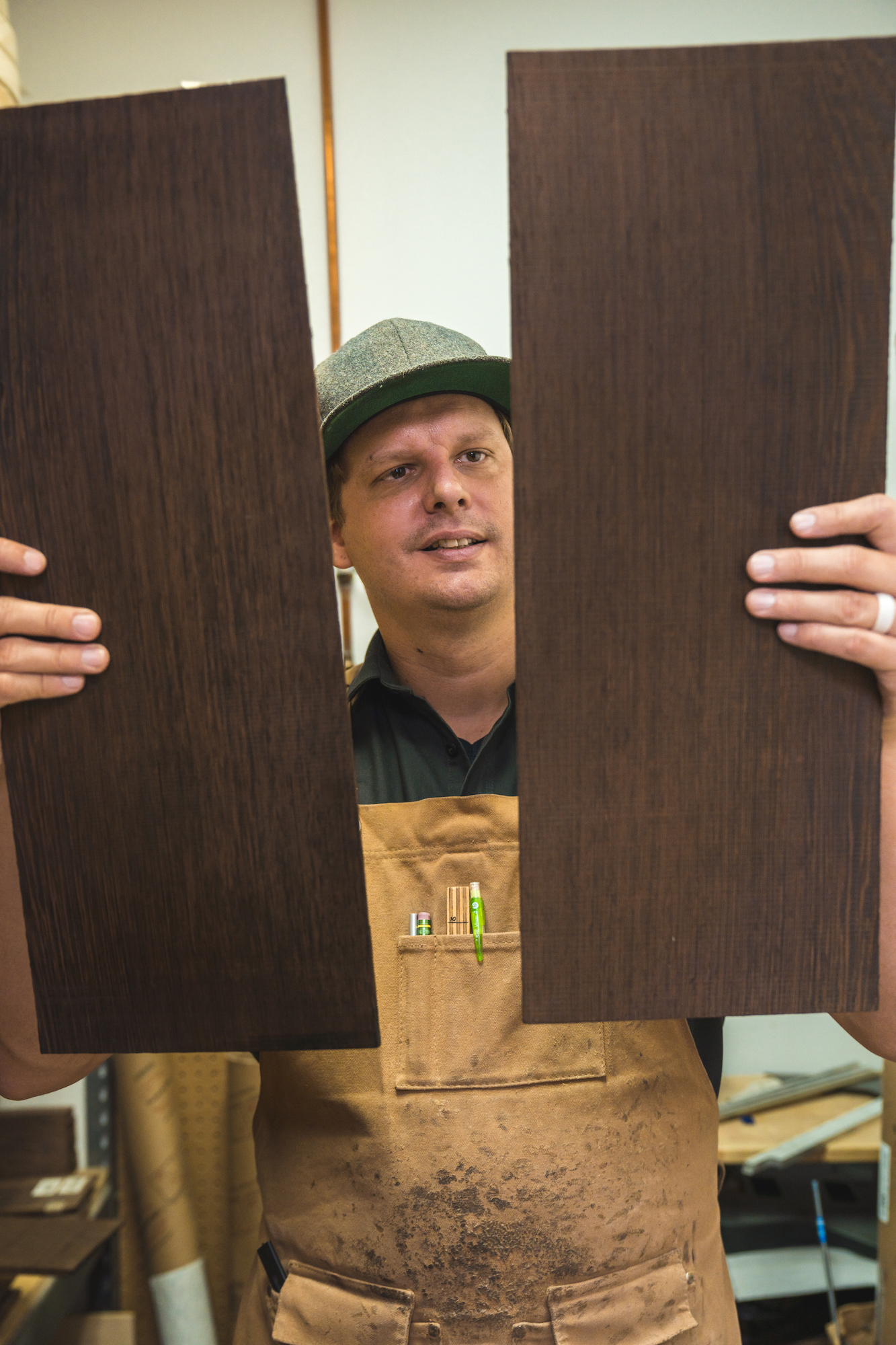
Made in California
Enns started at Yamaha in 2018, fueled by his love for steel-string guitars and a desire to learn even more about his craft.
“It was time to grow,” he says. “I didn’t grow up in a world surrounded by classical music or flamenco or anything like that. But I did grow up in a house filled with country music…and folk music.”
Enns’ Southern California workshop is located inside Yamaha’s LA-based Custom Shop. Though it’s been around for three decades, until recently this space focused on high-end electric guitars and basses and the needs of Yamaha’s Hollywood-based clientele. Thanks to Enns, acoustics can now be heard in the halls.
“Most of my time is building prototypes and communicating directly with engineers in Japan about how I build acoustic guitars,” he says. “We want to make this guitar sound brighter, or this guitar sound darker… how do we make this guitar more lightly? It’s back-and-forth communication about that.”
To accomplish this, Enns’ workday is a mix of Old World and new tech. “I will design and come up with two guitars of my own, out of my own head,” he explains. “And then they will give me two or maybe four guitars that the engineers in Japan have designed. They start off being 100% handmade. I will cut and hand-carve every brace with a chisel and tweak every top with a scraper and then progress as we define specs.” Every spec and change gets documented into a 3-D modeling program; the details can be dizzying. “The position of the brace is everything,” he adds, “down to within half a millimeter tolerance or even less.”
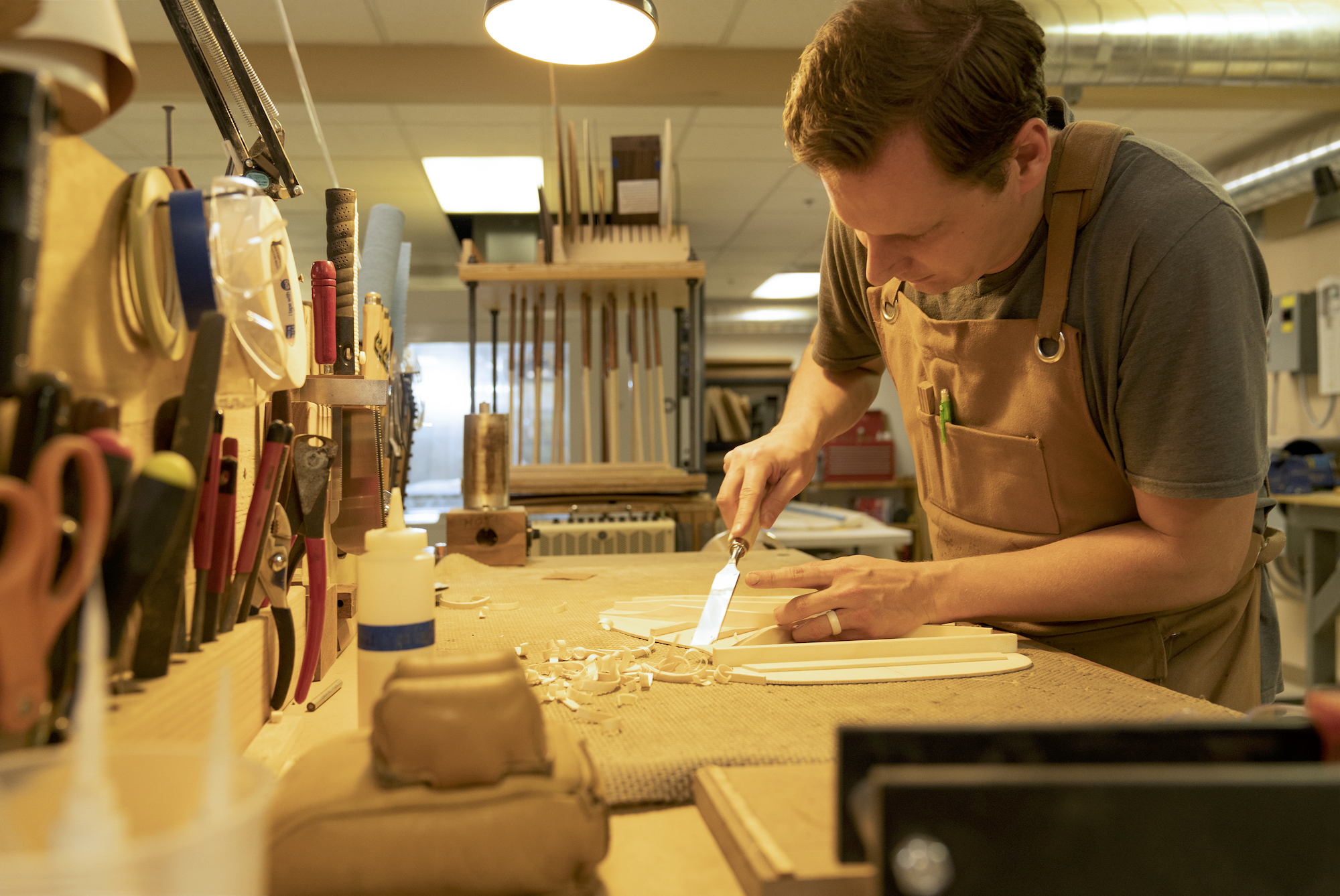
The process goes back-and-forth with guitars, ideas, and digital files flying across the Pacific at an eye-watering rate. The prototypes multiply as improvements are noted. “[For] the guitars that we just finished prototyping, I think I made 40 [prototypes] for two models,” he says. “Some of them were kind of redundant: ‘Now let’s make one with a bridge a tiny bit smaller… instead of a double action truss rod,’ ‘let’s put a traditional, single-action truss rod in it’… ‘let’s do a dovetail…’”
Enns is also able to tap into vast resources that few traditional guitar makers have. “There’s a whole Materials Development department [at Yamaha],” he continues, “and they test the wood to determine its characteristics so that they can essentially come up with an algorithm that the computer recognizes: A 3.2 millimeter thick Adirondack spruce top will behave differently than a 3.2 millimeter thick Sitka spruce top. You can’t just say ‘spruce’ in the computer. It has to be specific. Sourcing new materials, testing new materials, and aging new materials is a long process.”
As for the finished guitars after all this experimentation? Enns has no aspiration to copy designs or tones from Golden Era classics from Martin or Gibson. “We have our own history and our own guitars,” he says. “What do we sound like? What do people know us as? Yamaha has more of a resonant quality to it. It’s not huge and bass-y, it’s not super mid-rangey. It’s got a lot of harmonics and a lot of clarity. So let’s make a big dreadnought that has harmonics and clarity.”
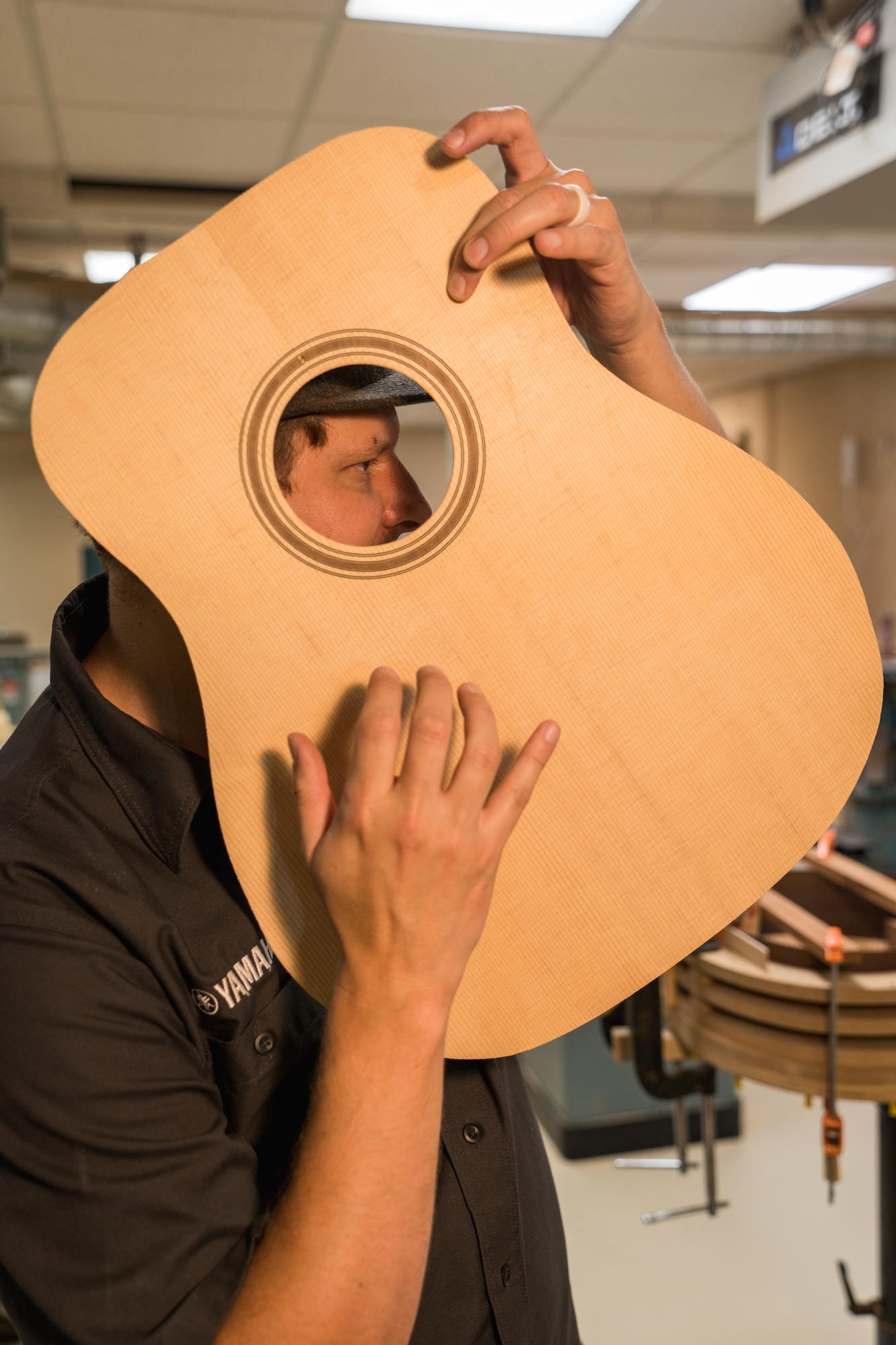
Next on the Horizon
Enns’ finished guitars have been slowly getting passed around and musicians are starting to take note. Hawktail’s Jordan Tice can often be spotted with his custom Yamaha. After trying them out at the 2022 Fretboard Summit, IBMA Instrumentalist of the Year nominee Jake Eddy is now using a Yamaha, too.
Eventually, the guitars’ designs will be dialed-in – down to the slightest measurement – and built in Japan on a larger scale. Until then, there’s always more data analyzing, prototyping, and fine-tuning to do. “It’s kind of a filling up the database of ideas to slowly, scientifically chip away at the magic that makes an acoustic guitar,” he says.
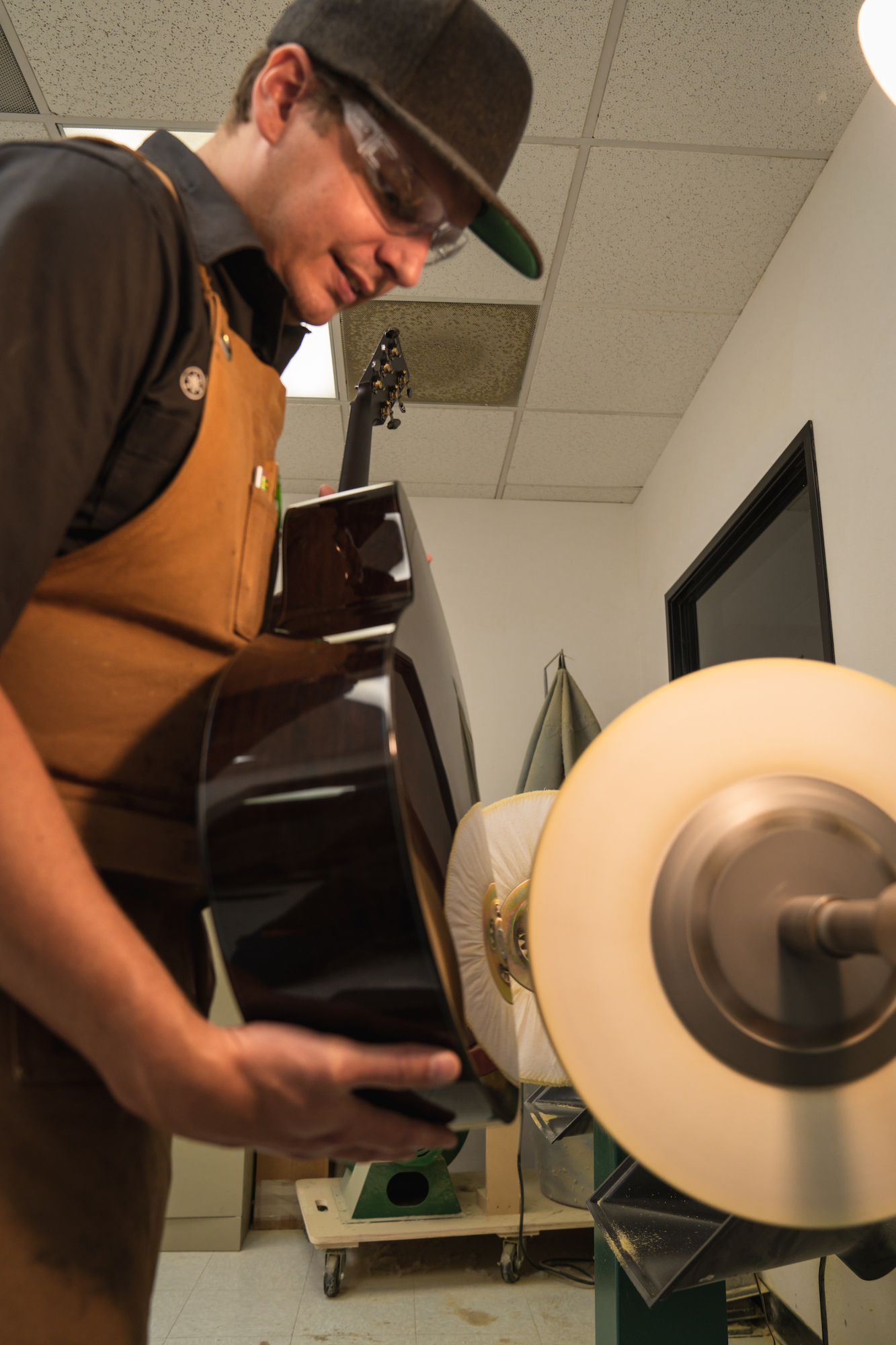
For the full interview, check out the Fretboard Journal Podcast #371 with Andrew Enns. It’s also available on Spotify and Apple Podcasts. Learn more about Yamaha Guitar Development here.
